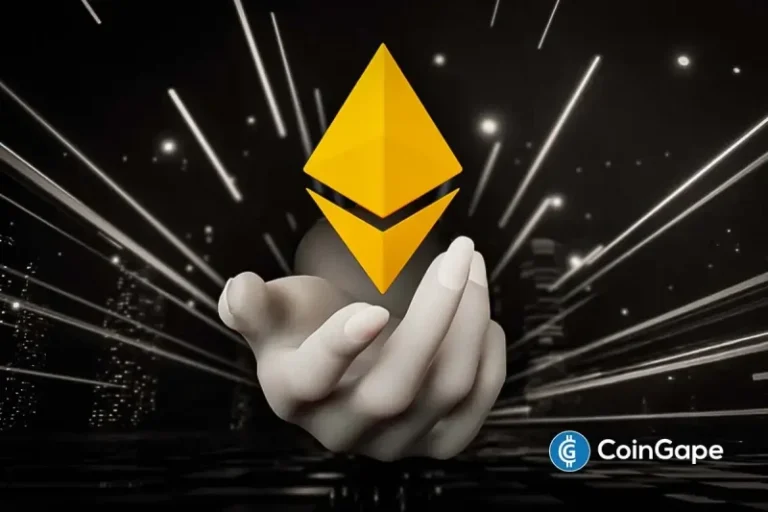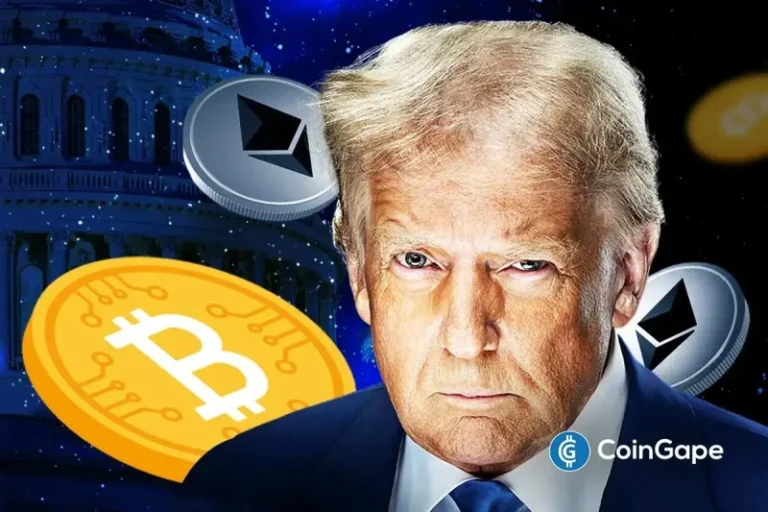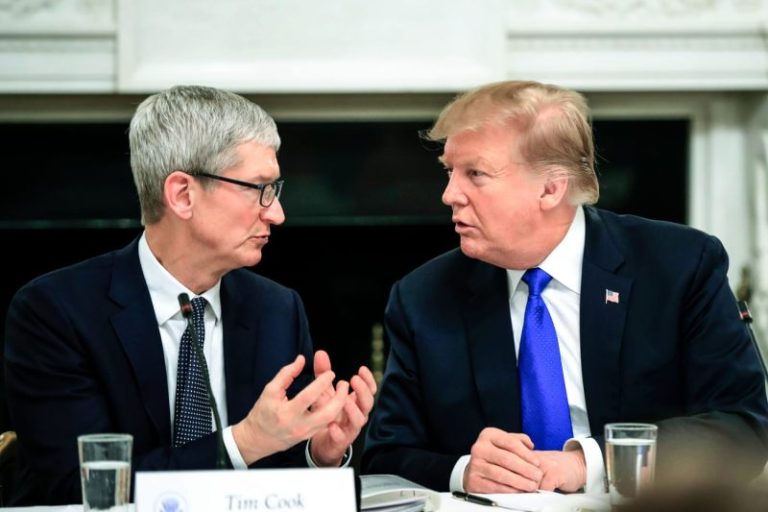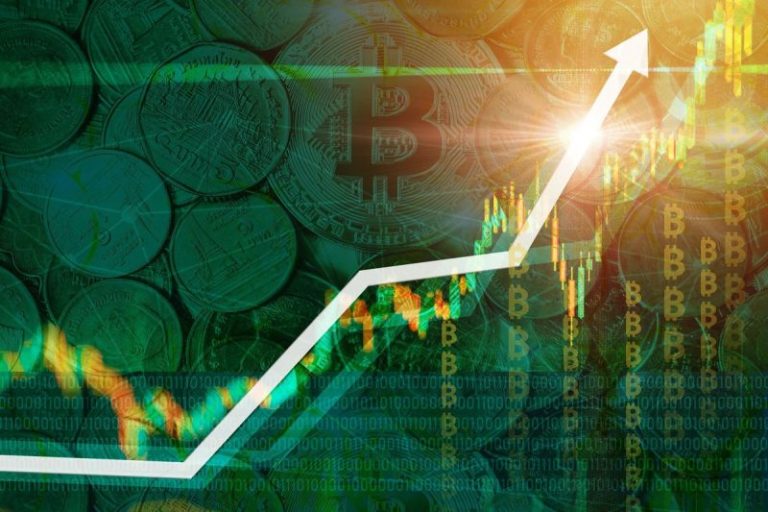OpenAI’s ChatGPT is one of the latest technological breakthroughs in the artificial intelligence space. But what is ChatGPT, and can you invest in OpenAI?
This emerging technology is representative of a niche subsector of the AI industry known as generative AI — systems that can generate text, images or sounds in response to prompts given by users.
Precedence Research expects the global AI market to grow at a compound annual growth rate (CAGR) of 19.2 percent to reach US$3.68 trillion by 2034. Just how much of an impact OpenAI’s ChatGPT will have on this space is hard to predict, but Fortune Business Insights estimates that the total market revenue of generative AI will see a CAGR of 39.6 percent through 2032, increasing from US$67.18 billion last year to US$967.65 billion in 2032.
In September 2024, Reuters reported that OpenAI was planning a restructuring from a non-profit to a for-profit company in order to make it ‘more attractive to investors.’ However, after encountering backlash and potential legal conflicts, in May 2025 OpenAI’s management decided to remain a non-profit while still converting its for-profit arm into a public benefit corporation.
OpenAI completed a new round of funding totaling US$40 billion in late March 2025 projected to bring its valuation to US$300 billion. Japanese multinational investment firm SoftBank made up 75 percent of the funding, while Microsoft (NASDAQ:MSFT), and investment firms Coatue Management, Altimeter Capital and Thrive Capital also took part in the raise.
The US Department of Defense (DoD) awarded a US$200 million contract to OpenAI in June 2025 to provide the DoD with artificial intelligence tools for addressing national security challenges, including cyber defense and warfare.
In this article
What is OpenAI’s ChatGPT?
Created by San Francisco-based tech lab OpenAI, ChatGPT is a generative AI software application that uses a machine learning technique called reinforcement learning from human feedback (RLHF) to emulate human-written conversations based on a large range of user prompts. This kind of software is better known as an AI chatbot.
ChatGPT learns language by training on texts gleaned from across the internet, including online encyclopedias, books, academic journals, news sites and blogs. Based on this training, the AI chatbot generates text by making predictions about which words (or tokens) can be strung together to produce the most suitable response.
More than a million people engaged with ChatGPT within the first week of its launch for free public testing on November 30, 2022. The introduction of ChatGPT quickly ushered in a new era in the tech industry.
Based on this success, OpenAI created a more powerful version of the ChatGPT system called GPT-4, which was released in March 2023. This iteration of ChatGPT can accept visual inputs, is much more precise and can display a higher level of expertise in various subjects. Because of this, GPT-4 can describe images in vivid detail and ace standardized tests.
Unlike its predecessor, GPT-4 doesn’t have any time limits on what information it can access; however, AI researcher and professor Dr. Oren Etzioni has said that the chatbot is still terrible at discussing the future and generating new ideas. It also hasn’t lost its tendency to deliver incorrect information with too high a degree of confidence.
Further improving on its product, in May 2024 OpenAI launched Chat GPT-4o, with the o standing for omni. OpenAI describes GPT-4o as ‘a step towards much more natural human-computer interaction—it accepts as input any combination of text, audio, image, and video and generates any combination of text, audio, and image outputs.’
This version has done away with the lagging response time afflicting GPT-4. This proves especially helpful for producing immediate translations during conversations between speakers of different languages. It also allows users to interrupt the chatbot to pose a new query to modify responses.
More recently, in December 2024, OpenAI introduced ChatGPT Pro subscriptions targeting engineers and academics. For US$200 monthly, users have nearly unlimited access to all ChatGPT models and tools.
The ChatGPT 3.5 and ChatGPT-4 platforms are free to use, and can be accessed via the web. Those with an iPhone or iPad can also use ChatGPT through an app, and an Android version launched in July 2023. OpenAI also launched a paid subscription, ChatGPT Plus for business use, in August 2023. ChatGPT Plus gives users access to GPT-4 and the newest iteration GPT-4o.
What is the Stargate Project?
The Stargate Project is an AI joint venture focused on building new AI infrastructure in the US through US$500 billion in investments. It was announced on January 21, 2025.
Stargate’s initial funding is coming from OpenAI, SoftBank, Oracle (NYSE:ORCL) and UAE-based technology fund MGX. In addition to OpenAI and Oracle, Stargate’s technology partners include Microsoft, NVIDIA, and British semiconductor and software design company Arm Holdings (NASDAQ:ARM).
Newly re-elected US President Trump unveiled Stargate during a press conference at the White House highlighting the importance of investment in US AI infrastructure. During the announcement, OpenAI’s Altman, Oracle co-founder Larry Ellison and Softbank CEO Masayoshi Son credited President Trump’s return to office as a major catalyst in making Stargate a reality. The construction of data centers for the Stargate Project are already underway in Texas, according to Ellison.
How much has Microsoft invested in OpenAI?
Ascannio / Shutterstock
Over the years, Microsoft has reportedly invested nearly US$14 billion in OpenAI to help the small tech firm create its ultra-powerful AI chatbot.
As for how Microsoft could benefit from its investment in OpenAI, OpenAI officially licensed its technologies to Microsoft in 2020 in a then-exclusive partnership. Indeed, Pitchbook has described the deal as an “unprecedented milestone” for generative AI technology. Since then, Microsoft has made good use of OpenAI’s technology in developing new advancement in its Azure cloud computing business.
However, the relationship between the two has changed in recent months.
Notably, Microsoft is not a financier of the Stargate Project joint venture, and is instead just described as a technology partner. According to OpenAI’s press release, the new joint venture builds on its existing partnership with Microsoft.
Microsoft’s lack of a funding role in Stargate led some to wonder if the trillion-dollar tech firm had soured on its relationship with OpenAI. This conclusion was understandable given reports that Microsoft refused to make a bigger contribution than the US$750 million it invested during the OpenAI US$6.6 billion funding round in October 2024.
Additionally, Microsoft changed the contract between the two companies and is no longer the exclusive cloud provider for OpenAI, but has the right of first refusal for deals the AI firm may make with other cloud companies.
As Bloomberg technology reporter Dina Bass explained, Microsoft stands to benefit from its role as a technology partner without having to invest a dime into the project.
“Microsoft views the revised contract with OpenAI as advantageous, according to people familiar with the company’s thinking. The software giant retains its share of OpenAI’s revenue and is the largest investor in a company that may now become even more valuable — though the size of that stake could change as the startup works to restructure as a for-profit,” wrote Bass. “And Microsoft also still has access to OpenAI models, even if they’re trained in a data center funded by Softbank or Oracle.”
Yet, there are reports that Microsoft and OpenAI’s relationship is on the brink of a big breakup. The tech giant has been pushing for a much larger percentage of OpenAI’s revenues than the 20 percent it currently enjoys. According to the Wall Street Journal, OpenAI is considering making antitrust complaints about Microsoft to regulators even though the two companies are still undergoing high level discussions about the future of the partnership.
Elon Musk’s position on OpenAI
DIA TV / Shutterstock
OpenAI was founded in 2015 by Altman, its current CEO, as well as Tesla (NASDAQ:TSLA) CEO Elon Musk and other big-name investors, such as venture capitalist Peter Thiel and LinkedIn co-founder Reid Hoffman. Musk left his position on OpenAI’s board of directors in 2018 to focus on Tesla and its pursuit of autonomous vehicle technology.
A few days after ChatGPT became available for public testing, Musk took to X, formerly known as Twitter, to say, “ChatGPT is scary good. We are not far from dangerously strong AI.” That same day, he announced that X had shut the door on OpenAI’s access to its database so it could no longer use it for RLHF training.
His reason: “OpenAI was started as open-source & non-profit. Neither are still true.”
Furthering his feud with OpenAI, Musk filed a lawsuit against the company in March 2024 for an alleged breach of contract. The crux of his complaint was that OpenAI has broken the ‘founding agreement’ made between the founders (Altman, Greg Brockman and himself) that the company would remain a non-profit. Altman and OpenAI have denied there was such an agreement and that Musk was keen on an eventual for-profit structure.
Musk dropped the lawsuit three months later without giving a reason, reported Reuters. The day before he dropped the lawsuit, he reacted to the news that Apple (NASDAQ:AAPL) is partnering with OpenAI to incorporate ChatGPT with Apple devices. On X, Musk declared, ‘If Apple integrates OpenAI at the OS (operating system) level, then Apple devices will be banned at my companies. That is an unacceptable security violation.” It should be noted that OpenAI has said queries completed on Apple devices will not be stored by OpenAI. By August 2024, Musk had resumed his litigation in federal court.
It seems that the US government also has questions about the restructuring of the private company and the involvement of tech giant Microsoft, as reported by Bloomberg. In early January 2025, the Financial Press also reported the Federal Trade Commission (FTC) has raised questions about the potential anti-trust violations in the newly emerging AI technology space arising from Microsoft’s partnership with and investments in OpenAI.
Of course, Musk took to X to weigh in on the Stargate Project, suggesting OpenAI and its partners don’t actually have the US$500 million they’ve pledged to invest. Sam Altman was quick to reply, telling Musk he’s mistaken and inviting him to visit their data center under construction in Texas.
However, Musk is not alone in his skepticism. For example, Atreides Management Chief Investment Office Gavin Baker also questioned the deal on X. “Stargate is a great name but the $500b is a ridiculous number and no one should take it seriously,” Baker wrote, backing up his statement by explaining the financial positions of each of the partners. “Nowhere close to $500b. Everyone should just start issuing press releases for $1 trillion AI projects.”
OpenAI criticisms and lawsuits
While ChatGPT has served as a major step forward in generative AI technology, there are many technical and ethical concerns with the program that have emerged since it launched, including fears over job destruction and targeted disinformation campaigns.
Accuracy of information in ChatGPT’s answers is not guaranteed. Its selection of which words to string together are actually predictions — not as fallible as mere guesses, but still fallible. Even the 4.0 version is “still is not fully reliable (it “hallucinates” facts and makes reasoning errors),” says the company, which emphasizes that users should exercise caution when employing the technology.
Indeed, ChatGPT’s failings can have dangerous real-life consequences. Among other negative applications, the tech can be used to spread misinformation, carry out phishing email scams or write malicious code.
There’s also the fear among teachers that the technology is leading to an unwelcome rise in academic dishonesty, with students using ChatGPT to write essays or complete their homework.
“Teachers and school administrators have been scrambling to catch students using the tool to cheat, and they are fretting about the havoc ChatGPT could wreak on their lesson plans,” writes New York Times tech columnist Kevin Roose.
Many lawsuits against OpenAI have emerged as well. Multiple news outlets, including the the New York Times, have launched copyright lawsuits against OpenAI, and some of the plaintiffs are also seeking damages from the private tech firm’s very public partner Microsoft.
Additionally, the Authors Guild, which represents a group of prominent authors, launched a class-action lawsuit against OpenAI that is calling for a licensing system that would allow authors to opt out of having their books used to train AI, and would require AI companies to pay for the material they do use.
In October, OpenAI researcher Suchir Balaji blew the whistle on the company, reporting that the firm was violating US copyright laws. He died one month later in what was ruled a suicide, but the investigation is still open.
Cybersecurity risks are also a concern for ChatGPT users, and recent events along these lines add validity to Musk’s warning. For one, in 2024 ChatGPT for macOS was discovered to be breaching Apple’s security rules by storing data as plain text rather than encryption, making it possible for other apps to access.
What’s the future of OpenAI and ChatGPT?
What about the long-term goals for OpenAI and ChatGPT? For most of the tech leaders in this space, the end game is artificial general intelligence (AGI) — a system that can perform any function the human brain can, including self-teaching, abstract thinking and understanding cause and effect.
As uptake increases, AI technology is taking over the role of humans and will likely continue doing so in a number of fields, from content creation and customer service to transcription and translation services, and even in graphic design, software engineering and paralegal fields.
In addition to Microsoft’s use of the ChatGPT technology as part of Copilot, other companies are working with OpenAI to incorporate the technology into their platforms, including Canva, Duolingo (NASDAQ:DUOL), Expedia Group (NASDAQ:EXPE), Intercom, Salesforce (NASDAQ:CRM), Stripe, Tinder, Upwork (NASDAQ:UPWK) and Visa (NYSE:V).
For 2025, OpenAI is focusing on developing agentic AI capabilities into its ChatGPT platform. Agentic AI, a part of the evolution towards AGI, involves AI systems and models that can act autonomously and complete tasks without much human guidance. Early in January, OpenAI announced the rollout of new task features for ChatGPT Pro, Plus and Teams users. While still in the beta stage, these features allow users to schedule future tasks to be completed by ChatGPT, such as a weekly news brief or reminders about important meetings.
OpenAI first debuted its foray into agentic AI in September 2024 with the introduction of ChatGPT o1, stating ‘We’ve developed a new series of AI models designed to spend more time thinking before they respond.’ The release of the next iterations of this model, ChatGPT o3 mini and o4 mini happened in the first half of 2025.
The recent release of Chinese startup DeepSeek’s AI assistant may present a problem for OpenAI and the US tech industry as a whole. In what tech gurus like Marc Andreesen call AI’s Sputnik moment, DeepSeek unseated ChatGPT as the most downloaded free app in the Apple App Store, at reportedly a fraction of the cost. For reference, in 1957 the Soviets launched Sputnik, the earth’s first artificial satellite, beating out the United States and sparking a Cold War space exploration race between the two nations.
The DeepSeek launch set off a significant sell off in technology stocks on January 27, 2025, especially among the Magnificent Seven members, including NVIDIA, Microsoft and Alphabet (NASDAQ:GOOGL).
When will OpenAI go public?
OpenAI stock is not currently publicly traded, and following the May 2025 decision to remain a non-profit, there are no signs of an on initial public offering (IPO) in the works for 2025. For now, investors can gain exposure through related tech companies discussed below.
Which stocks will benefit the most from AI chatbot technology?
Other than companies directly tied to generative AI technology, which stocks are likely to get a boost from generative AI advancements?
There are several verticals in the tech industry with indirect exposure to AI chatbot technology, such as semiconductors, network equipment providers, cloud providers, central processing unit manufacturers and internet of things.
Some of the publicly traded companies in these verticals include:
You can also take a look back at the market with our AI Market 2024 Year-End Review and AI Market Update: Q2 2025 in Review, or read projections for AI this year in our AI Market Forecast: 3 Top Trends that will Affect AI in 2025. Generative AI is also a major theme in the Top 10 Emerging Technologies to Watch.
FAQs for investing in OpenAI and ChatGPT
How is OpenAI funded?
OpenAI raised US$57.9 billion over 11 funding rounds from 2016 to March 2025.
Top investors include technology investment firm Thrive Capital, venture capital firm Andreessen Horowitz and revolutionary technology investment firm Founders Fund.
What is the market value of ChatGPT/OpenAI?
OpenAI has a market valuation of US$300 billion as of June 2025. The company’s annualized revenue reached the US$10 billion mark in June 2025, up from the US$5.5 billion achieved in December 2024.
Does ChatGPT use NVIDIA chips?
ChatGPT’s distributed computing infrastructure depends upon powerful servers with multiple graphics processing units (GPUs). High-performance NVIDIA GPU chips are preferred for this application as they also provide excellent Compute Unified Device Architecture support.
What is DeepSeek?
DeepSeek is a Chinese AI company that launched new AI-driven, open-source language models known as DeepSeek-V3 and DeepSeek-R1 into the market in January 2025. Reuters reports that ‘the training of DeepSeek-V3 required less than $6 million worth of computing power from Nvidia H800 chips.’
DeepSeek-R1 is designed to compete with the performance of OpenAI-o1 across math, code, and reasoning tasks.
Can ChatGPT make stock predictions?
A University of Florida study from 2023 highlighted the potential for advanced language models such as ChatGPT to accurately predict movements in the stock market using sentiment analysis.
During the course of the study, ChatGPT outperformed traditional sentiment analysis methods, and the finance professors conducting the research concluded that “incorporating advanced language models into the investment decision-making process can yield more accurate predictions and enhance the performance of quantitative trading strategies.”
When to expect ChatGPT 5?
In June 2025, during an OpenAI podcast Sam Altman responded with, ‘Probably some time this summer,’ when asked about when the market can expect to see ChatGPT-5.
Previously, OpenAI filed a trademark application for ChatGPT-5 in mid-July 2023, which hinted that the next iteration of the generative AI technology is currently under development. There were rumors the company planned to complete training for ChatGPT-5 by the end of 2023, but this did not materialize. PC Guide noted in April 2024 that Sam Altman had teased an “amazing new model this year’ in an interview on the Lex Fridman podcast.
In November 2024, Altman confirmed that ChatGPT-5 wouldn’t likely hit the market until later in 2025 as the company switched its focus to ChatGPT o1 and its successors.
Securities Disclosure: I, Melissa Pistilli, hold no direct investment interest in any company mentioned in this article.










